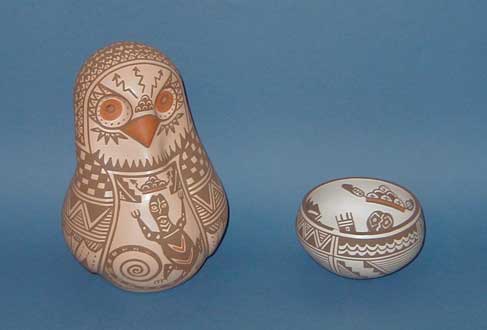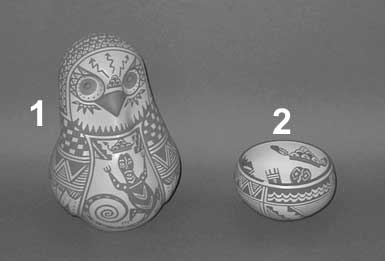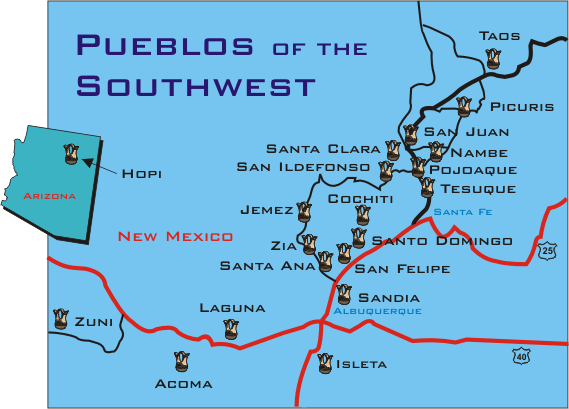 ClayHound Web
- Sandia Pueblo
ClayHound Web
- Sandia PuebloReturn to:
|
Sandia Pueblo is located in central New Mexico just north of Albuquerque. Pottery from this Pueblo is one of the hardest to find of all the Pueblos. Bien Mur Indian Market, located on and operated by Sandia Pueblo, is one of the best facility to find pottery while in New Mexico. However, there is rarely any Sandia traditional pottery for sale in the store. |
|
|
|
|
|
|
|
Sandia Pueblo, 14 miles north of Albuquerque on the east side of the Rio Grande, and Isleta Pueblo, 14 miles south of Albuquerque on the west side of the river, are both Tiwa-speaking pueblos. Their native names are Nafiat (dusty) and Tuei (town). Sandia Pueblo lands comprise 22,884 acres, (93 km2) and the village itself seems to have been occupied continuously since about 1300. Isleta's lands comprise 187,826 acres (760 km2) and the present village site cannot be dated earlier than 1500. The core population of both villages is probably made up of descendants of Puebloan peoples living in the Rio Grande Valley long before European contact. |
|
|
Both pueblos probably also received population increments from the now extinct Piro Pueblos, which existed before the conquest along the river south of Isleta and from the abandoned Saline Pueblos (Abo, Gran Quivera, and Quarai) of the Estancia Basin. In about 1880, Isleta welcomed and gave land to a group from Laguna Pueblo, a Kersean-speaking pueblo. The immigrants have intermarried with the native Isletans. The populations of both Sandia and Isleta have grown considerably since the turn of the century. In 1900, Sandia's population was just 74 persons. In 1968, this figure was 248. During the same period, Isleta's population grew from 989 to 2,449. At both villages, there has been a recent trend toward building separate, "American-style" houses, closer to the highway than the older parts of town.
from -
http://www.newmexico.org/culture/pueblo_sandia.html |
|


